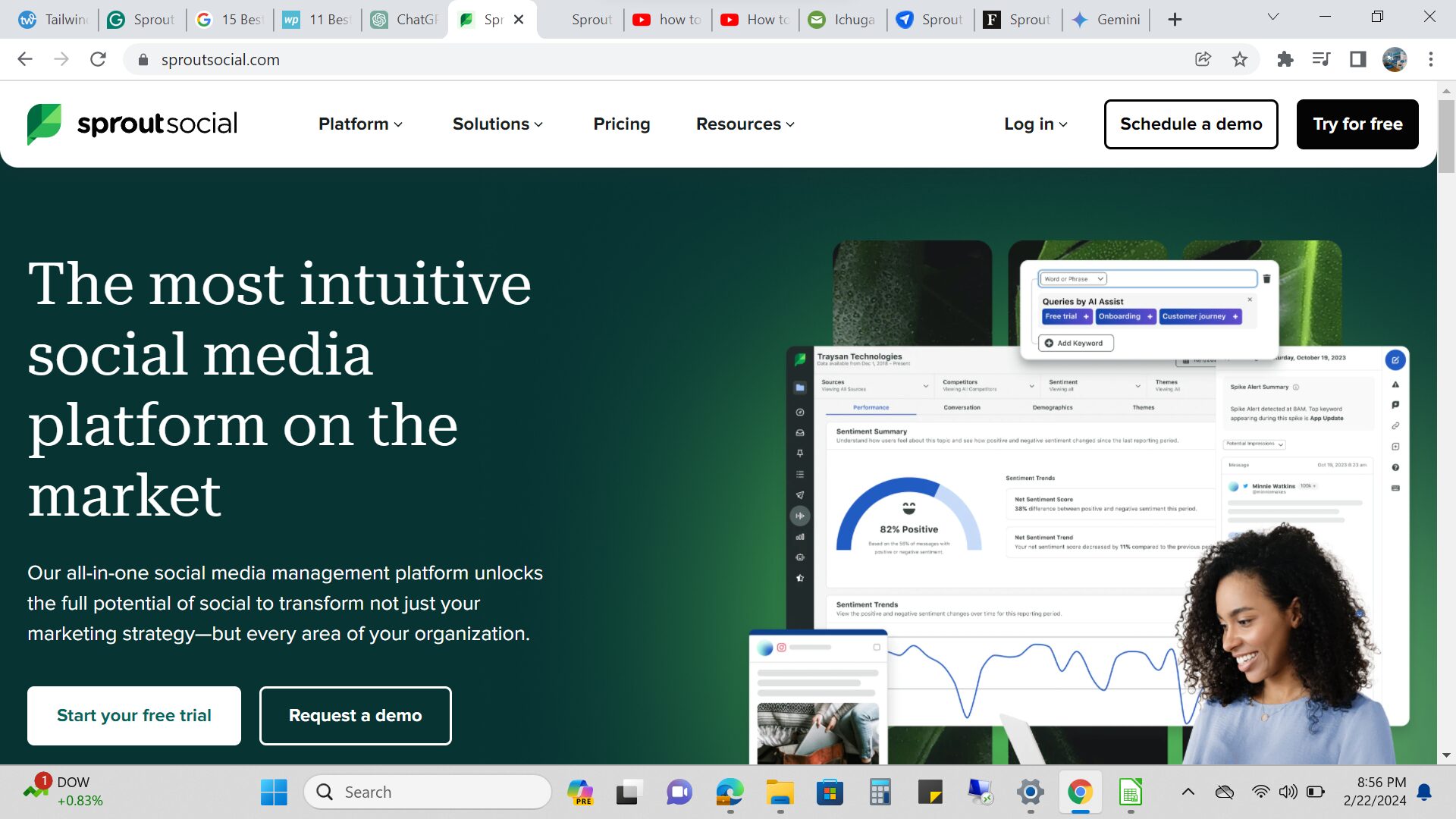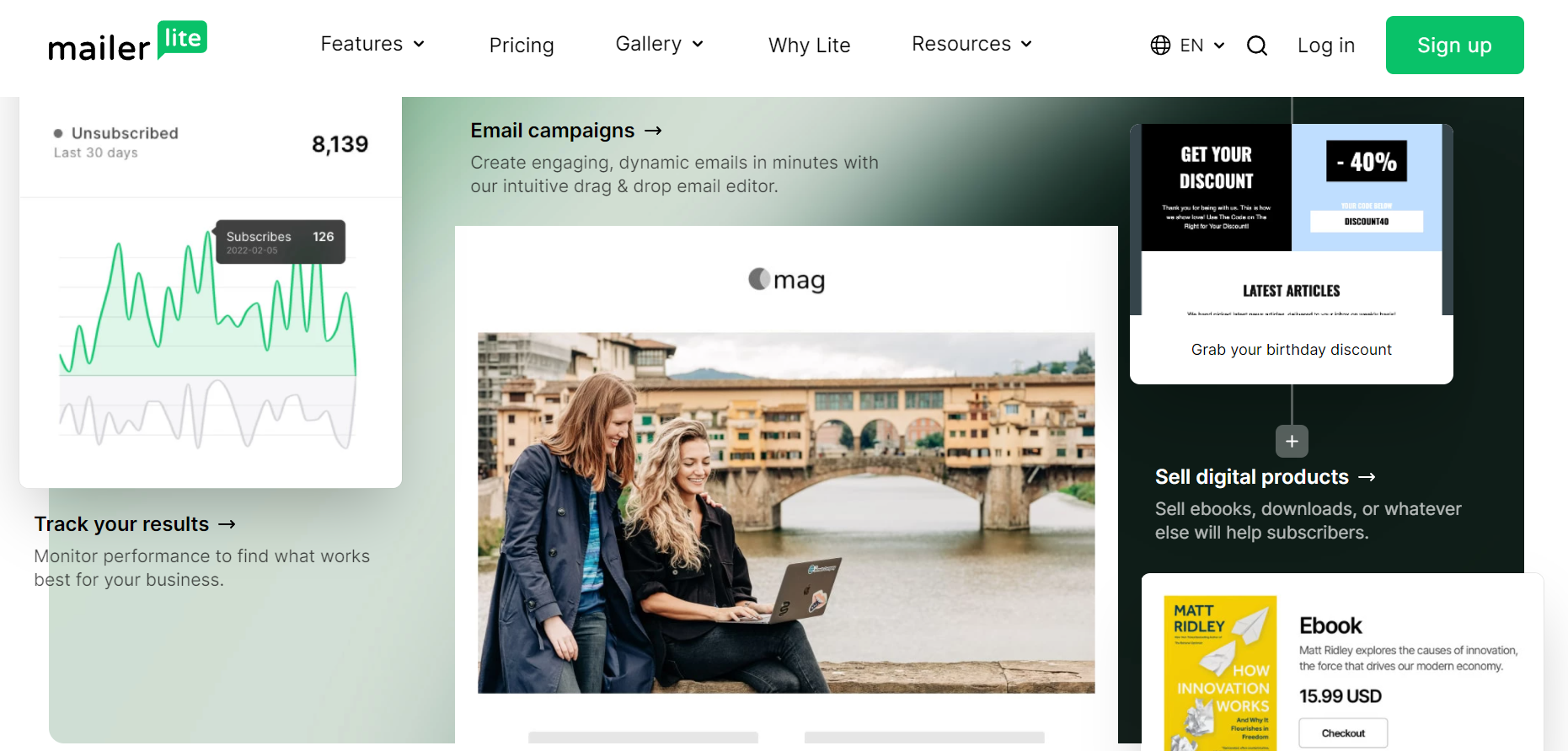What are human resource software?
Human Resources (HR) software and tools refer to a set of digital solutions designed to streamline and enhance various HR processes within an organization. These tools can range from standalone software applications to integrated suites that cover a wide range of HR functions.
The primary goal of HR software and tools is to automate administrative tasks, improve efficiency, reduce manual errors, enhance employee experience, and provide data-driven insights to support strategic decision-making within the HR department and the organization as a whole.
Common HR functions that software and tools can address include:
1. Recruitment and Applicant Tracking: Managing job postings, receiving and reviewing applications, scheduling interviews, and tracking candidate progress.
2. Employee Onboarding: Digitizing the process of getting new employees acclimated to the organization, including paperwork, training, and orientation.
3. Time and Attendance Tracking: Monitoring employee work hours, tracking attendance, managing leaves, and generating time-related reports.
4. Payroll and Benefits Administration: Calculating and disbursing employee salaries, managing benefits, and ensuring compliance with tax regulations.
5. Performance Management: Setting goals, conducting performance reviews, providing feedback, and managing performance-related data.
6. Training and Development: Identifying training needs, organizing training programs, and tracking employee skill development.
7. Employee Self-Service Portals: Allowing employees to access their personal information, request time off, view pay stubs, and update their profiles.
8. Data Analytics and Reporting: Collecting and analyzing HR-related data to derive insights for strategic decision-making.
9. Compliance and Legal Requirements: Ensuring HR practices and processes align with labor laws and regulations.
What to consider when choosing Human Resource software?
When choosing the best Human Resource software and tools for your organization, several factors need to be considered:
1. Functionality: Identify your organization’s specific needs and ensure that the software covers all the essential HR functions required. Avoid overcomplicating with unnecessary features that might not be used.
2. Scalability: Consider whether the software can accommodate your organization’s growth in terms of employee numbers and changing requirements.
3. User-Friendly Interface: The software should be intuitive and easy to navigate for both HR professionals and employees.
4. Integration Capabilities: Check if the software can integrate with existing tools and systems, such as your payroll software, CRM, or other business software.
5. Customization: Determine whether the software can be tailored to match your organization’s unique processes and workflows.
6. Vendor Reputation and Support: Research the vendor’s reputation, customer reviews, and the level of customer support they provide.
7. Data Security and Privacy: Ensure the software complies with data protection regulations and offers robust security features to safeguard sensitive HR data.
8. Cost and ROI: Compare the costs of the software against the potential benefits and efficiency gains it offers.
9. Mobile Compatibility: In today’s mobile-driven world, having a mobile-friendly interface or dedicated mobile apps can enhance accessibility for employees and HR professionals.
10. Reporting and Analytics: Look for software that offers robust reporting and analytics capabilities to derive insights from HR data.
11. Trial and Testing: Whenever possible, take advantage of free trials or demos to test the software’s functionality and compatibility with your needs.
12. Future Upgrades: Consider the vendor’s history of updates and improvements to ensure the software remains up-to-date and aligned with evolving HR practices.
13. User Feedback: Gather input from HR professionals and potential end-users to ensure that the chosen software meets their needs and preferences.
14. Training and Support: Evaluate the training materials and support resources provided by the vendor to help your team get up to speed with the software.
15. Vendor Stability: Consider the vendor’s financial stability and longevity in the industry to ensure they will be able to support the software in the long run.
Here are 13 popular HR software and tools that businesses often consider for their HR management needs:
1. BambooHR
2. Workday
3. Zenefits
4. Namely
5. Gusto
6. ADP Workforce Now
7. Kronos Workforce Ready
8. Ultimate Software (now UKG Pro)
9. Oracle HCM Cloud
10. Paycom
11. SAP SuccessFactors
12. Cezanne HR
13. Dayforce (by Ceridian)
what are the best Human Resource software in 2024?
1: BambooHR
BambooHR is a robust Human Resource software solution designed to simplify and enhance various HR processes within organizations. With its comprehensive suite of features, BambooHR caters to businesses of all sizes, offering efficient solutions for applicant tracking, onboarding, time tracking, performance management, and reporting.
BambooHR is a robust HR software solution designed to simplify and enhance various HR processes within organizations. With its comprehensive suite of features, BambooHR caters to businesses of all sizes, offering efficient solutions for applicant tracking, onboarding, time tracking, performance management, and reporting.
Key Features
– Applicant Tracking: BambooHR streamlines the recruitment process by allowing HR professionals to manage job postings, receive and review applications, and schedule interviews all within the platform.
– Onboarding: The software offers tools to digitize and automate the employee onboarding process, ensuring new hires have a smooth transition into the organization.
– Time Tracking: BambooHR assists in monitoring employee work hours, tracking attendance, managing leaves, and generating time-related reports.
– Performance Management: The platform facilitates performance management by providing features for setting goals, conducting reviews, offering feedback, and tracking employee performance over time.
– Custom Reporting: BambooHR’s reporting capabilities allow users to derive valuable insights from HR data, helping organizations make informed decisions.
Benefits
– Efficiency: Automating HR processes reduces manual administrative tasks, saving time and minimizing errors.
– Employee Experience: BambooHR’s user-friendly interface enhances the experience for both HR professionals and employees, offering self-service options.
– Data-Driven Decisions: The software’s analytics and reporting tools provide valuable data to support strategic decision-making.
– Compliance: BambooHR helps organizations stay compliant with labor laws and regulations by offering features that ensure HR practices adhere to legal requirements.
Integration and Scalability
BambooHR offers integration capabilities with other tools and systems, enabling seamless data flow across various platforms. Additionally, the software is scalable, accommodating the growth of organizations by providing tools that cater to expanding needs.
2. Workday
Workday is a comprehensive cloud-based solution that seamlessly integrates Human Resource and finance management. It’s well-suited for medium to large enterprises seeking a unified platform for managing HR functions, payroll, benefits, and financial data.
Key Features:
– Unified Platform: Workday brings HR and finance together on a single platform, allowing for better collaboration and data accuracy.
– Talent Management: The software covers recruitment, talent development, performance management, and succession planning.
– Financial Management: In addition to HR, Workday offers financial tools for budgeting, planning, and analytics.
– Scalability: Designed for growth, Workday adapts to the changing needs of organizations as they expand.
Benefits:
– Efficiency: Workday streamlines workflows and reduces data duplication by integrating HR and finance processes.
– Real-time Insights: The platform provides real-time analytics for informed decision-making.
– Employee Engagement: With its intuitive interface, employees can access their data, benefits, and performance information.
– Compliance: Workday helps ensure regulatory compliance with built-in auditing and security features.
Integration and Scalability:
Workday’s open architecture allows it to integrate with other systems, making data sharing seamless. The software’s scalability supports businesses as they grow and evolve.
3. Zenefits
Zenefits is a Human Resource platform designed for small and mid-sized businesses, providing tools to manage HR, payroll, benefits, and compliance in one place.
Key Features:
– Benefits Administration: Zenefits offers tools to manage employee benefits, enrollments, and changes seamlessly.
– Payroll: The software automates payroll processes, including tax calculations and direct deposits.
– Compliance Management: Zenefits helps organizations stay compliant by automating HR-related regulatory tasks.
– Intuitive Interface: The platform’s user-friendly interface makes it easy for HR administrators and employees to navigate.
Benefits:
– Simplicity: Zenefits simplifies HR tasks, reducing administrative burden and potential errors.
– Employee Self-Service: Employees can access and update their information, request time off, and view benefits through a self-service portal.
– Time Savings: Automation of various HR processes frees up HR professionals to focus on strategic tasks.
– Compliance: Zenefits aids compliance by helping organizations stay up-to-date with changing regulations.
Integration and Scalability:
Zenefits integrates with a variety of business applications, ensuring seamless data flow. The software is designed to accommodate growth and changing needs.
4. Namely
Namely is a comprehensive human resource platform catering to mid-sized businesses, offering a suite of tools for HRIS, payroll, time management, and talent management.
Key Features:
– HRIS: Namely’s HRIS capabilities centralize employee data, facilitating easy access and management of employee information.
– Payroll: The platform automates payroll processes, ensuring accurate and timely payment to employees.
– Talent Management: Namely assists in performance management, goal setting, and talent development.
– Time Management: Tools for time tracking and attendance management contribute to efficient workforce management.
Benefits:
– Centralized Data: Namely’s HRIS centralizes data, providing a single source of truth for employee information.
– Employee Development: The talent management features help organizations nurture and retain top talent.
– Compliance: Namely helps manage compliance by staying up-to-date with labor laws and regulations.
– Collaboration: The platform enhances collaboration among HR teams and employees through its user-friendly interface.
Integration and Scalability:
Namely offers integrations with various third-party systems, ensuring seamless data exchange. The platform scales to accommodate business growth.
5. Gusto
Gusto is a user-friendly human resource platform primarily focused on payroll and benefits administration, catering to small and mid-sized businesses.
Key Features:
– Payroll Automation: Gusto automates payroll calculations, tax filings, and direct deposits, reducing manual effort.
– Benefits Administration: The platform helps manage employee benefits, enrollments, and compliance.
– Employee Self-Service: Gusto offers an intuitive self-service portal for employees to access their pay stubs and benefits information.
Benefits:
– Simplicity: Gusto’s streamlined interface and automation simplify payroll and HR tasks.
– Accuracy: The platform’s automation minimizes errors in payroll and tax calculations.
– Employee Experience: The self-service portal empowers employees to access and manage their own information.
– Time Savings: Automation reduces the time HR professionals spend on manual administrative tasks.
Integration and Scalability:
Gusto integrates with accounting and time-tracking systems, enhancing overall efficiency. While suitable for small and mid-sized businesses, its features may meet the needs of growing organizations.
6. ADP Workforce Now
ADP Workforce Now is a comprehensive platform that covers HR, payroll, benefits, time tracking, and talent management.
Key Features:
– Payroll Management: ADP’s payroll solution ensures accurate and timely payment to employees.
– Benefits Administration: The platform helps manage employee benefits and supports open enrollment processes.
– Time and Attendance: Tools for time tracking and attendance management contribute to workforce efficiency.
Benefits:
– End-to-End Solution: ADP Workforce Now covers a wide range of HR and payroll needs within a single platform.
– Compliance: The platform aids compliance with labor laws and regulations, reducing compliance-related risks.
– Data Insights: ADP’s reporting and analytics capabilities provide insights for informed decision-making.
– Scalability: The platform is suitable for businesses of various sizes and can scale with organizational growth.
Integration and Scalability:
ADP Workforce Now integrates with various third-party systems and offers scalability for evolving business needs.
7. Kronos Workforce Ready
Kronos Workforce Ready is a cloud-based platform that covers workforce management, payroll, time and attendance, and HR functions.
Key Features:
– Workforce Management: Kronos offers tools for employee scheduling, time tracking, and labor cost management.
– Payroll Integration: The platform integrates payroll processes seamlessly, ensuring accurate compensation.
– HR Functionality: Kronos provides HR features for onboarding, employee self-service, and compliance management.
Benefits:
– Comprehensive Solution: Kronos Workforce Ready offers a holistic approach to managing the entire employee lifecycle.
– Efficiency: Automation of scheduling, time tracking, and payroll reduces administrative burden.
– Employee Engagement: Self-service capabilities empower employees to manage their information and schedules.
– Compliance: The platform helps organizations adhere to labor laws and regulations.
Integration and Scalability:
Kronos Workforce Ready is scalable to meet the needs of businesses of different sizes. It can integrate with other systems for enhanced functionality.
8. Ultimate Software (now UKG Pro)
Ultimate Software, now part of UKG Pro, offers a unified Human Capital Management (HCM) solution with HR, payroll, talent management, and employee experience features.
Key Features:
– Unified HCM: Ultimate Software provides a single platform for HR, payroll, talent management, and engagement.
– Payroll Processing: The platform automates payroll calculations, tax compliance, and direct deposits.
– Talent Management: Ultimate Software assists in goal setting, performance reviews, and career development.
Benefits:
– Holistic Approach: The unified HCM approach simplifies HR processes and enhances data accuracy.
– Employee Experience: Ultimate Software focuses on enhancing employee engagement and satisfaction.
– Data-Driven Insights: The platform’s analytics capabilities provide insights to guide strategic decisions.
– Compliance: The platform helps organizations stay compliant with changing regulations.
Integration and Scalability:
Ultimate Software (UKG Pro) integrates with other systems and offers scalability to adapt to business growth and changes.
9. Oracle HCM Cloud
Oracle HCM Cloud is an enterprise-grade HR management solution offering a wide range of HR, talent, and workforce management functionalities.
Key Features:
– Talent Management: Oracle HCM Cloud covers recruitment, performance management, learning, and career development.
– Workforce Analytics: The platform provides data-driven insights for better workforce planning and decision-making.
– Employee Self-Service: Oracle HCM Cloud offers a self-service portal for employees to manage their information.
Benefits:
– Comprehensive Solution: The platform’s wide range of features caters to complex HR and talent management needs.
– Data Analytics: Oracle HCM Cloud’s analytics tools provide actionable insights for strategic HR decisions.
– Scalability: The platform can accommodate the needs of large and growing organizations.
– Global Capabilities: Oracle HCM Cloud supports multi-country HR and localization requirements.
Integration and Scalability:
Oracle HCM Cloud integrates with other Oracle Cloud products and can integrate with third-party systems. Its scalability suits the requirements of enterprises.
10. Paycom
Paycom offers an integrated HR and payroll solution designed to streamline processes, enhance employee engagement, and ensure compliance.
Key Features:
– HR Management: Paycom provides tools for employee records, document management, and HR analytics.
– Payroll Processing: The platform automates payroll calculations, tax compliance, and direct deposits.
– Employee Self-Service: Paycom offers a self-service portal for employees to access pay stubs, tax forms, and benefits information.
Benefits:
– Unified Platform: The integration of HR and payroll data eliminates data redundancy and errors.
– Employee Engagement: Paycom’s self-service portal empowers employees to manage their information and benefits.
– Compliance: The platform aids in complying with labor laws and regulatory requirements.
– Data-Driven Decisions: Paycom’s analytics tools provide insights to guide strategic HR decisions.
Integration and Scalability:
Paycom integrates with other business systems and offers scalability to accommodate growth and changes in HR needs.
11. SAP SuccessFactors
SAP SuccessFactors is a cloud-based Human Capital Management (HCM) suite that covers core HR, talent management, performance management, and more.
Key Features:
– Talent Management: SAP SuccessFactors includes modules for recruiting, onboarding, performance management, and learning.
– Analytics and Reporting: The platform provides advanced analytics to derive insights from HR data.
– Employee Experience: SAP SuccessFactors focuses on improving the overall employee experience.
Benefits:
– Scalable HCM Solution: The suite caters to businesses of all sizes, offering flexibility and scalability.
– Employee Development: SuccessFactors’ talent management features nurture employee growth and development.
– Strategic Insights: The platform’s analytics capabilities support data-driven decision-making.
– Global Support: SuccessFactors is equipped to handle multinational HR and localization requirements.
Integration and Scalability:
SAP SuccessFactors integrates with other SAP solutions and third-party applications. The platform is designed to scale with organizational growth.
12. Cezanne HR
Cezanne HR is a cloud-based HR solution suitable for mid-sized businesses, offering features such as HRIS, performance management, and absence tracking.
Key Features:
– HRIS: Cezanne HR centralizes employee data for easy access and management.
– Performance Management: The platform aids in setting goals, conducting reviews, and performance tracking.
– Absence Tracking: Cezanne HR offers tools to manage employee leaves and absence requests.
Benefits:
– Efficiency: The centralized HRIS simplifies employee data management and reporting.
– Employee Development: Cezanne HR’s performance management features foster employee growth.
– Absence Management: The platform streamlines leave tracking and absence management processes.
– User-Friendly Interface: Cezanne HR offers an intuitive interface for easy navigation.
Integration and Scalability:
Cezanne HR integrates with various third-party systems, ensuring seamless data flow. The platform scales to accommodate business growth.
13. Dayforce (by Ceridian)
Dayforce, developed by Ceridian, is a unified platform offering workforce management, payroll, benefits, and analytics.
Key Features:
– Workforce Management: Dayforce covers scheduling, time tracking, and labor cost management.
– Payroll Integration: The platform integrates payroll processes for efficient compensation management.
– Benefits Administration: Dayforce helps manage employee benefits, enrollments, and compliance.
Benefits:
– End-to-End Solution: Dayforce’s comprehensive approach simplifies workforce management and payroll.
– Data Analytics: The platform’s analytics capabilities provide insights for informed decision-making.
– Employee Experience: Dayforce empowers employees with self-service tools for information access.
– Compliance: Dayforce supports compliance with labor laws and regulations.
Integration and Scalability:
Dayforce integrates with various third-party systems, enhancing its capabilities. The platform scales to accommodate business growth.
Key takeaway on HR Software and Tools
In conclusion, the realm of HR software and tools has undergone a remarkable transformation, enabling organizations to revolutionize how they manage and engage their workforce.
The adoption of these tools empowers HR professionals to focus on strategic initiatives while automating administrative tasks, promoting compliance, and enhancing employee experiences.
The best HR software and tools create a synergy between data-driven insights and human-centric approaches, fostering an environment where talent is nurtured and organizational goals are achieved.
As businesses continue to navigate dynamic market conditions and changing workforce expectations, investing in the right HR software and tools is an essential step towards optimizing HR processes and contributing to sustained business success.
FAQs on the Best HR Software and Tools
Q1: What are HR software and tools?
HR software and tools are digital solutions designed to streamline and automate various HR processes within organizations. These tools encompass functions such as recruitment, onboarding, time tracking, payroll management, performance evaluation, talent development, compliance management, and more.
Q2: How do I choose the best HR software and tools for my business?
To choose the best HR software and tools, consider factors like functionality (covering your specific needs), user-friendliness, integration capabilities, customization options, vendor reputation, data security, cost, reporting and analytics features, and scalability to accommodate future growth.
Q3: Can HR software and tools support compliance with labor laws?
Yes, many HR software solutions include compliance management features to ensure that HR practices align with labor laws and regulations. These features can help track and manage regulatory requirements and minimize compliance-related risks.
Q4: Are these tools suitable for businesses of all sizes?
Yes, there are HR software solutions designed for businesses of all sizes, from small startups to large enterprises. Look for solutions that cater to your organization’s specific size and needs.
Q5: How can HR software enhance employee engagement?
HR software often includes self-service portals that allow employees to access their information, request time off, and update their profiles. This self-service capability empowers employees and improves engagement by providing them with more control over their HR-related tasks.
Q6: Can HR software provide insights for strategic decision-making?
Absolutely. Many HR software solutions offer reporting and analytics features that provide data-driven insights into various HR metrics. These insights can inform strategic decisions related to workforce planning, performance improvement, and talent management.
Q7: How does integration play a role in HR software selection?
Integration is crucial to ensure that your HR software can work seamlessly with other systems your organization uses, such as accounting software, CRM systems, and more. Integrated systems reduce data duplication and enhance efficiency.
Q8: Is employee data security a concern with HR software?
Yes, employee data security is a significant concern. When choosing HR software, prioritize solutions with strong data security measures, such as encryption, access controls, and compliance with data protection regulations.
Q9: What’s the ROI of investing in HR software and tools?
The ROI of HR software can be substantial in terms of time savings, reduced administrative costs, improved accuracy, enhanced compliance, and the ability to make more informed decisions based on data-driven insights.
Q10: How often should I reassess my HR software and tools?
Reassess your HR software and tools periodically, especially when your organization experiences growth, changes in HR processes, or when new features become necessary to stay competitive in the evolving business landscape.




